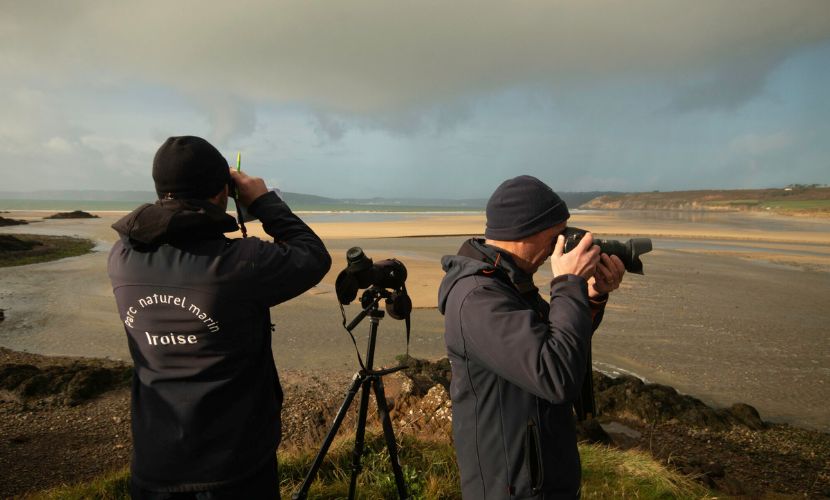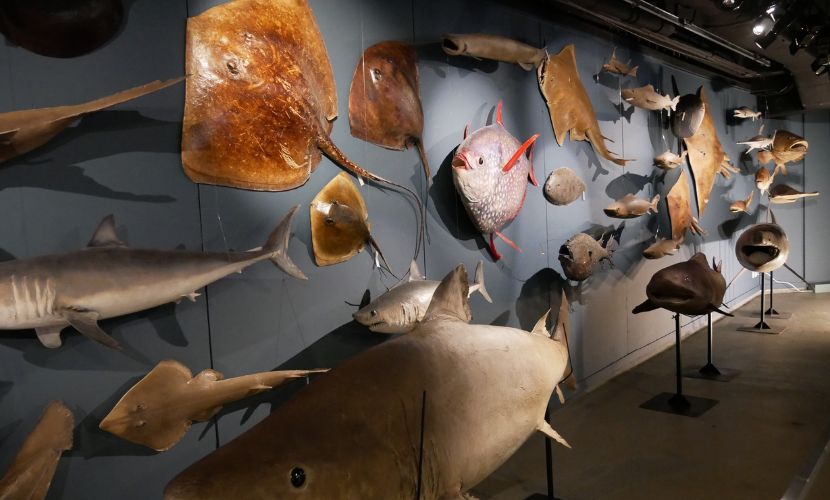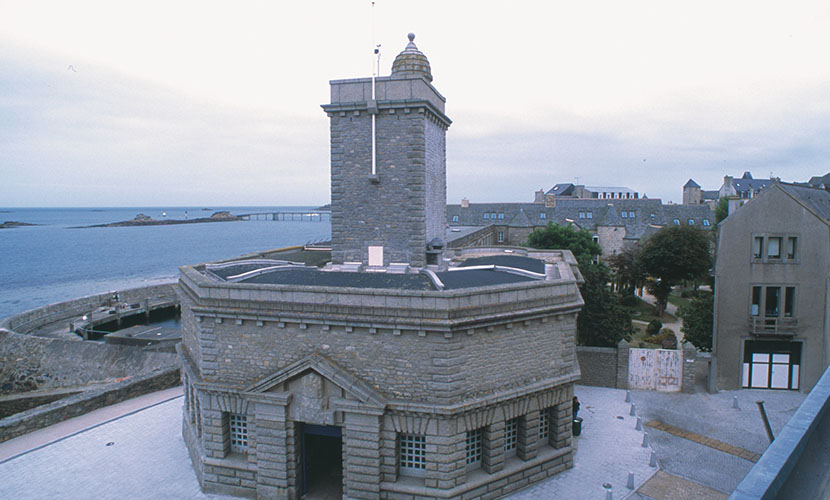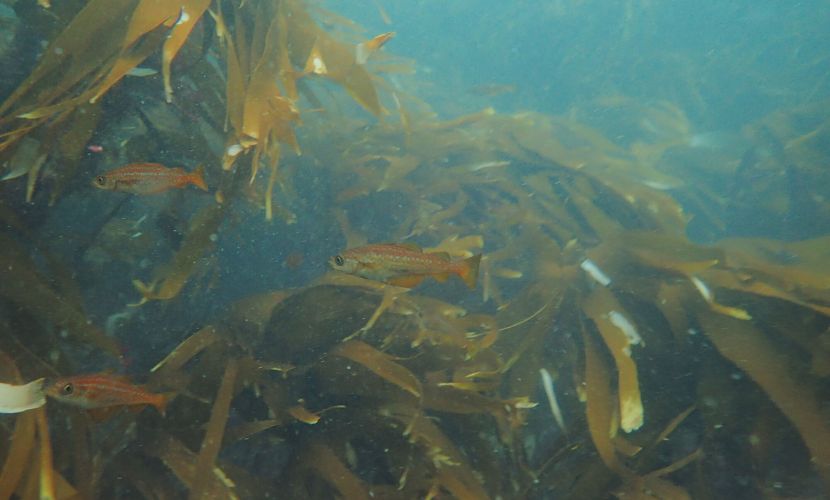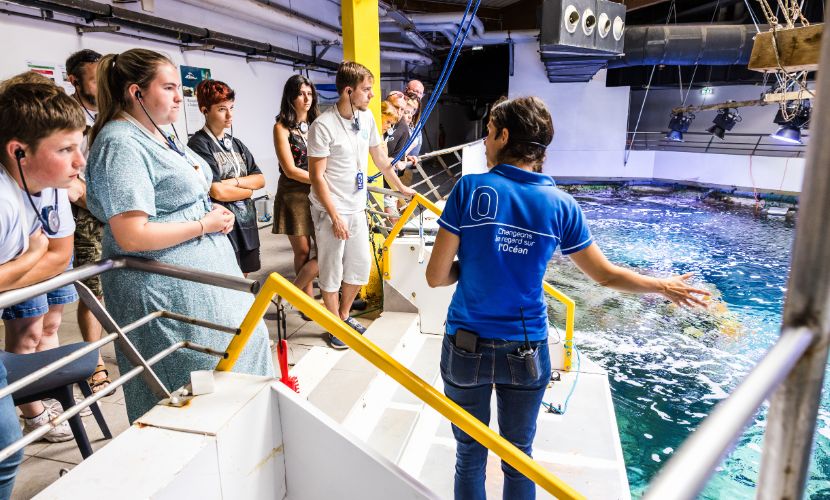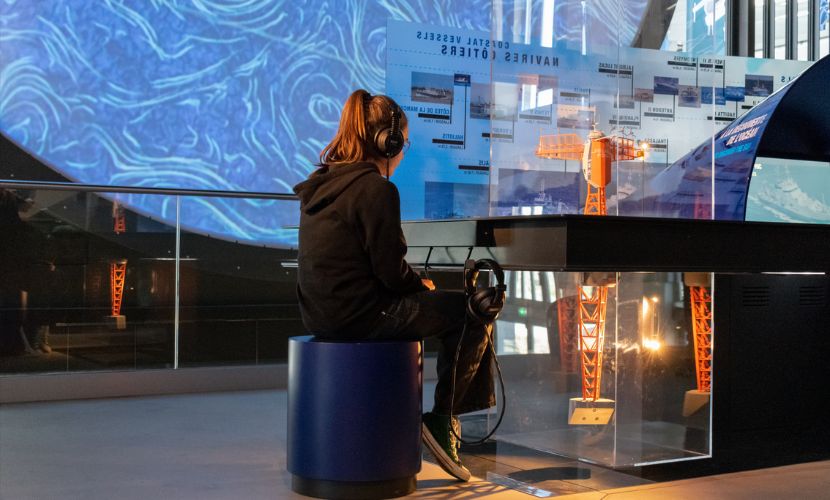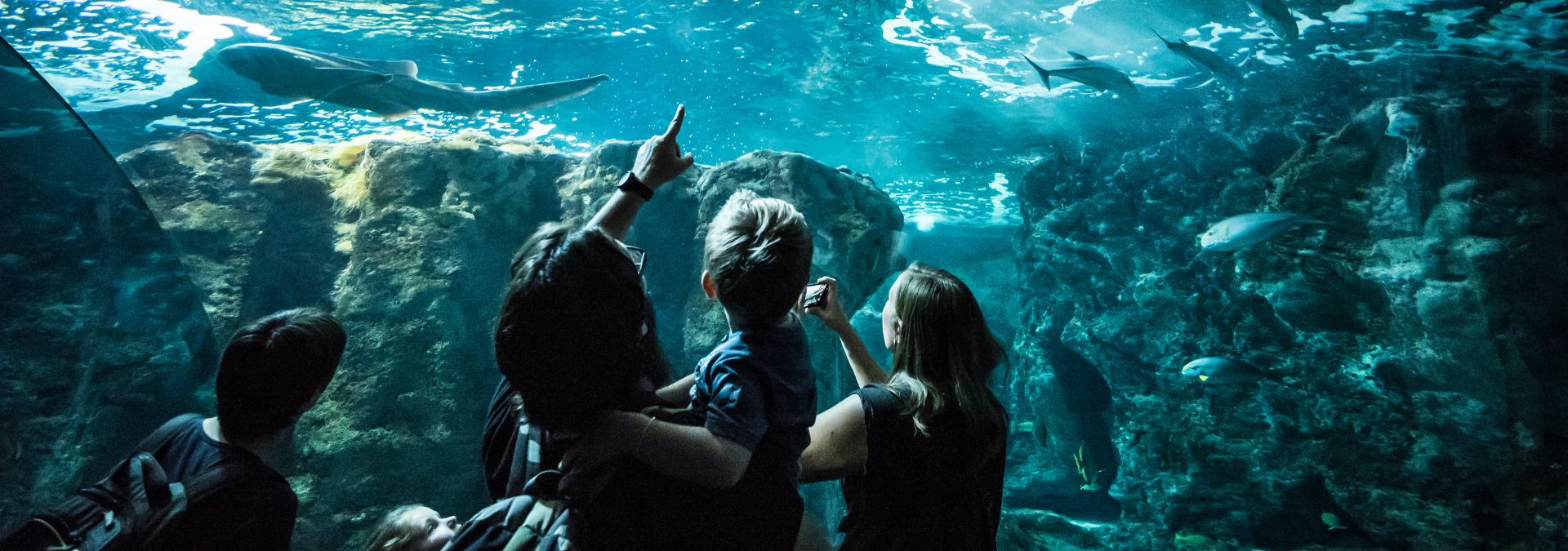
Learning, preserving and sharing
Around 70% of all the marine research in France happens right here in Finistère. Our little county is home to several major research centres including Ifremer, the Roscoff biological station and the Concarneau marine biology station, all welcoming and supporting researchers working on the ocean. Many of these players have attended the ‘Campus Mondial de la Mer’ (World Sea Campus) in Brest, a leading French community dedicated to furthering the knowledge and development of marine resources. The campus brings together more than 800 researchers, 200 companies, higher education establishments, national research centres and local authorities in the field of marine science and technology.
The Iroise Marine Park covers 3,500 km² and boasts an exceptional natural and cultural heritage. It plays a key role in raising awareness and providing education for all, with an aim of promoting knowledge and protecting the marine environment while sustainably developing marine activities.
This knowledge is shared through museums, discovery classes, nautical centres, workshops and outings, as well as the autumn Science Fair in which many of these players take part.
Follow the guide and dive into the deep blue sea to discover its hidden treasures.
Concarneau marine station, the oldest in the world
Not far from Concarneau’s historic walled town, facing the open sea and the Glénan Archipelago, you’ll find the oldest marine station in the world still in operation, supported by France’s Natural History Museum. It was founded in 1859 by Victor Coste (1807-1873), a professor at the Collège de France, and came well before its counterparts in Naples, Kief and Plymouth.
Research activities, the dissemination of knowledge and the management of specimen collections make the Concarneau site a world expert on the state of coastal biodiversity.
Open to the public, the Marinarium is located in the same building and is a showcase for the research carried out by the station, focusing particularly on local flora and fauna. In addition to the aquariums, visitors can enjoy a permanent exhibition and regularly updated temporary exhibitions.
Roscoff Biological Station, 150 years of research
Roscoff Biological Station (not open to the public) is a centre for marine biology, oceanography research and teaching. It’s a particular gem in Finistère’s marine heritage and plays an active role in the international reputation of this coastal town. Founded in 1872 by Henri de Lacaze-Duthiers, Roscoff was the second marine station in Europe to open after Concarneau, which was founded in 1859.
Roscoff’s coastline was particularly suitable for such a research centre, given its wide tidal range, diversity of habitats and countless organisms. Since the 1800s, the station has helped to train the elite of biologists from France and other countries, including Nobel Prize winners such as André Lwoff and Jacques Monod. It has a long history of welcoming eminent scientists such as its founder Henri de Lacaze-Duthiers – a professor at the Sorbonne – and Georges Teissier – director of France’s National Centre for Scientific Research from 1946 to 1950. Researchers at the Roscoff Station have been and still are responsible for several major advances in all areas of biological sciences.
The three hundred scientists, technicians and students who work there today use the latest methods in molecular and cellular biology, still keeping the same goal in mind: to increase the sum of fundamental knowledge, to achieve a better understanding of how ecosystems function and how marine organisms adapt to global change.
As well as research work, this renowned site in Roscoff has maintained close links with artists. Mathurin Méheut was due to spend two weeks at the station in 1910, yet he ended up staying for two years, leaving behind an incredibly rich body of work on marine biodiversity. The filmmaker and biologist Jean Painlevé was also a regular at Roscoff – specialising in underwater fauna, he is known for his scientific documentaries and is considered to be one of the founding fathers of scientific cinema. More recently, the station has welcomed visual artist Daniela Lorini, who draws her inspiration from seaweed to capture its musicality.
Iroise Natural Marine Park, a treasure trove of biodiversity
Created on 28th September 2007, France’s first natural marine park aims to preserve the Iroise Sea’s exceptional biodiversity while supporting the sustainable use of its resources. Situated between the Côte des Légendes to the north and Cornouaille coast to the south, this is a protected area covering an area of 3,500 km², equivalent to half the size of Finistère itself. The incredible multitude of habitats, encompassing dunes, cliffs, moors, islands, archipelagos and rocky seabeds is home to exceptional flora and fauna.
A cold current meets Brittany’s rocky reefs, creating an environment that’s truly conducive to the development of marine life, with more than 300 species of seaweed, 120 species of fish and many protected marine birds, such as the Razorbill. It’s also home to many marine mammals such as the grey seal and bottlenose dolphin – in fact, a quarter of the marine mammals found off the coast of France can be found in our marine park.
Océanopolis, marvelling at and understanding the ocean
Brittany’s number-one tourist attraction, Océanopolis has been based at Brest’s Moulin-Blanc harbour since 1990. Step inside and you’ll be taken on a journey around the globe to the heart of the ocean and marine ecosystems, through three pavilions: Polar, Tropical and Brittany. With a surface area of 8,700 m², around 1,000 animals and 10,000 plant and animal species, Océanopolis is the 2nd biggest aquarium in France.
While it’s a fabulous place for tourists and visitors, Océanopolis is above all an educational centre for scientific discovery and culture that is unique in Europe. Working closely with major players in the marine sciences such as Ifremer, the Iroise Marine Park and cutting-edge marine technology companies, Océanopolis aims to raise awareness of the need to protect the oceans. The Brittany Pavilion offers visitors the chance to discover the biodiversity of our own coasts: sardines, short-snouted seahorses, European lobsters, pink spiny lobsters, langoustines, Moon jellyfish, and of course the irresistible seals, whose daily feeding schedule is a delight for visitors!
The Tropical Pavilion takes visitors to the warm seas and the inter-tropical belt, featuring a dazzling array of multicoloured fish, coral reefs, lagoons, sharks and a tropical greenhouse. Here, you’ll be able to see 700 species of fish and invertebrates in their natural habitat, with seawater maintained at 25°C. In contrast, the Polar Pavilion takes you to the ends of the earth, where you can discover Europe’s largest penguin nursery and its colony of adorable penguins, three species of polar seal, polar anemones and the strange-looking wolf fish. Since 2015, the Polar pavilion has also been home to whiskered seals, who weigh between 200 kg and 250 kg and can grow over two metres long. Océanopolis is the second aquarium in the world to feature this species and is also the only park in France to have North Pacific sea otters.
70.8, a showcase for maritime innovation
The 70.8 Ocean Museum is so called because this is the percentage of the world’s surface covered by ocean. Founded in 2021 in Brest’s Capucins workshops, the 70.8 visitor centre covers 900 m² and is entirely dedicated to science, technology and maritime innovation.
A showcase for the World Maritime Campus, 70.8 illustrates the region’s maritime excellence. Spread over three levels, this visitor centre explores the ocean through a number of themes: marine biotechnologies, deep-sea exploration, marine renewable energies (also known as ‘blue energies’), ocean observation and research, maritime traffic and naval innovations. On each floor, information areas are brought to life by fun tools for young and old alike including tactile tablets, digital displays and a giant interactive carpet that gives you the odd sensation of walking on water and playing with the fish.
Here you can discover the often-unsuspected role that the ocean plays in our daily lives, from our plates to our first-aid kits. Did you know, for example, that a common marine worm enabled biologist Franck Zal to discover the formula for universal haemoglobin, compatible with all blood groups? Or that the fully recyclable ‘can of the future’ developed by chef Thierry Marx was in fact made from seaweed?

